Langmuir Blodgett Trough Rehabilitation
Fulfilling the shop class requirement
By far the most extensive instrumentation project I undertook, and documented in my MS Physics thesis.
Langmuir Blodgett deposition was pioneered by the work of Agnes Pockels and Katharine Blodgett. The basic idea is to deposit a self-orienting monolayer on top of a polar subphase, then leverage the surface dynamics to transfer the monolayer to a substrate

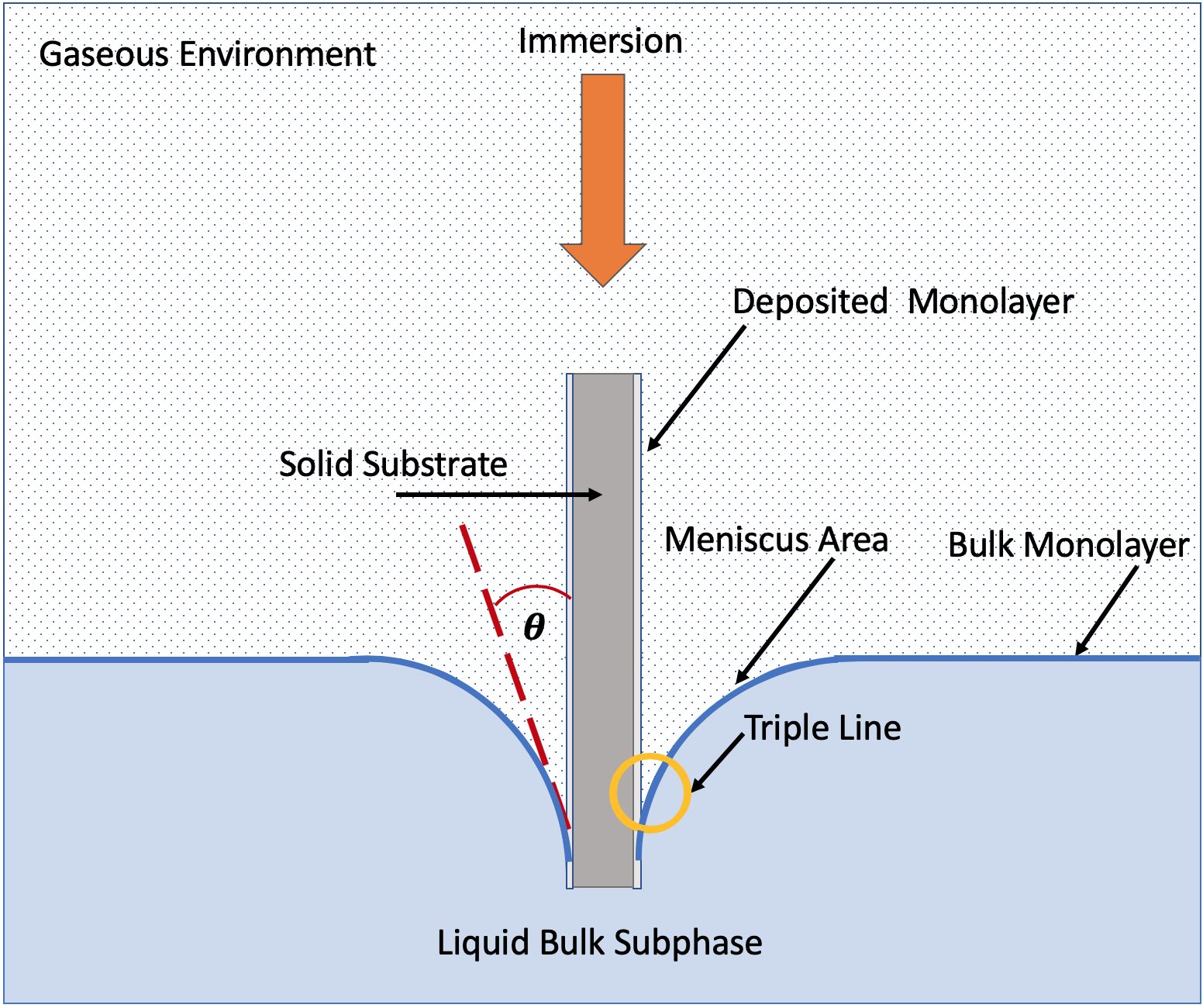
I inherited a KSV Langmuir Blodgett chassis and some microelectronics c. 1991, kitted out for surface tension studies. The first step to rehabilitation was designing and fabricating a new tray with a reservoir suitable for thin film deposition. Ebay is an excellent source of raw materials.
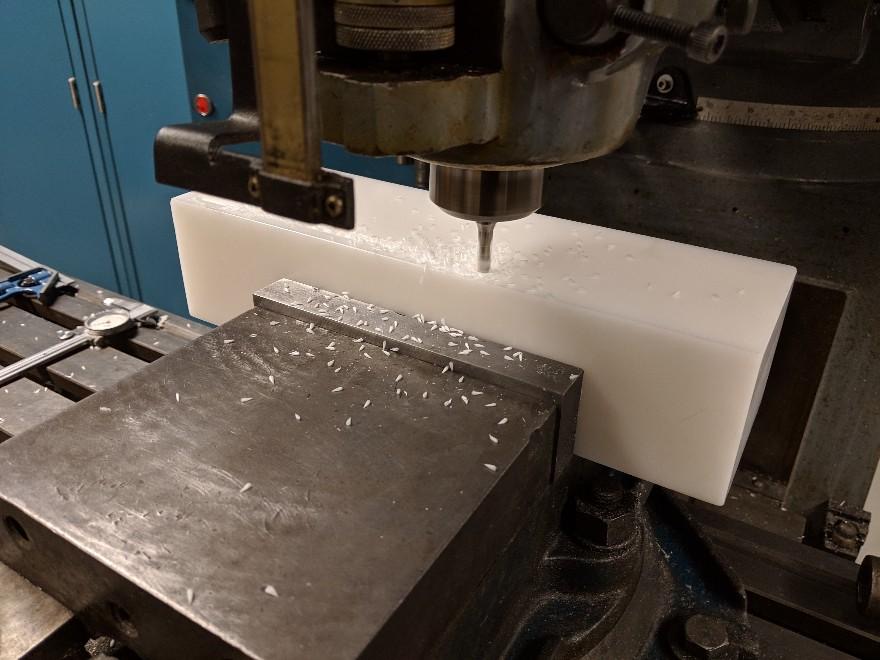
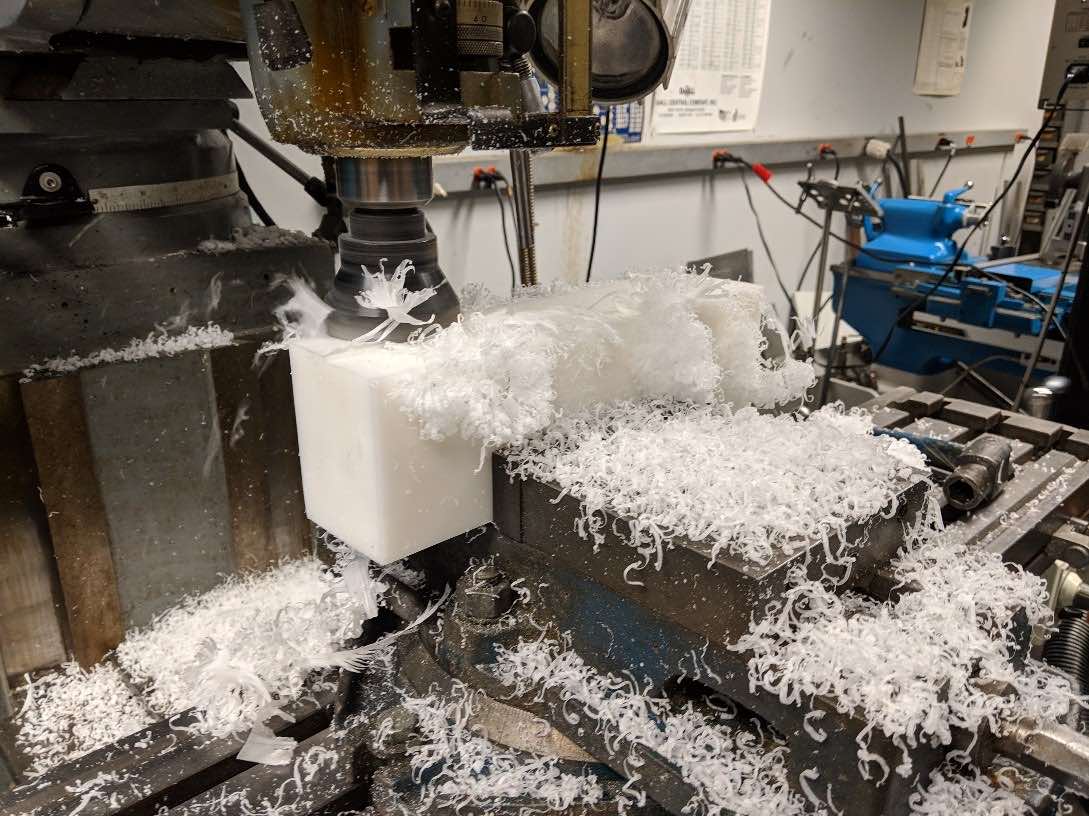
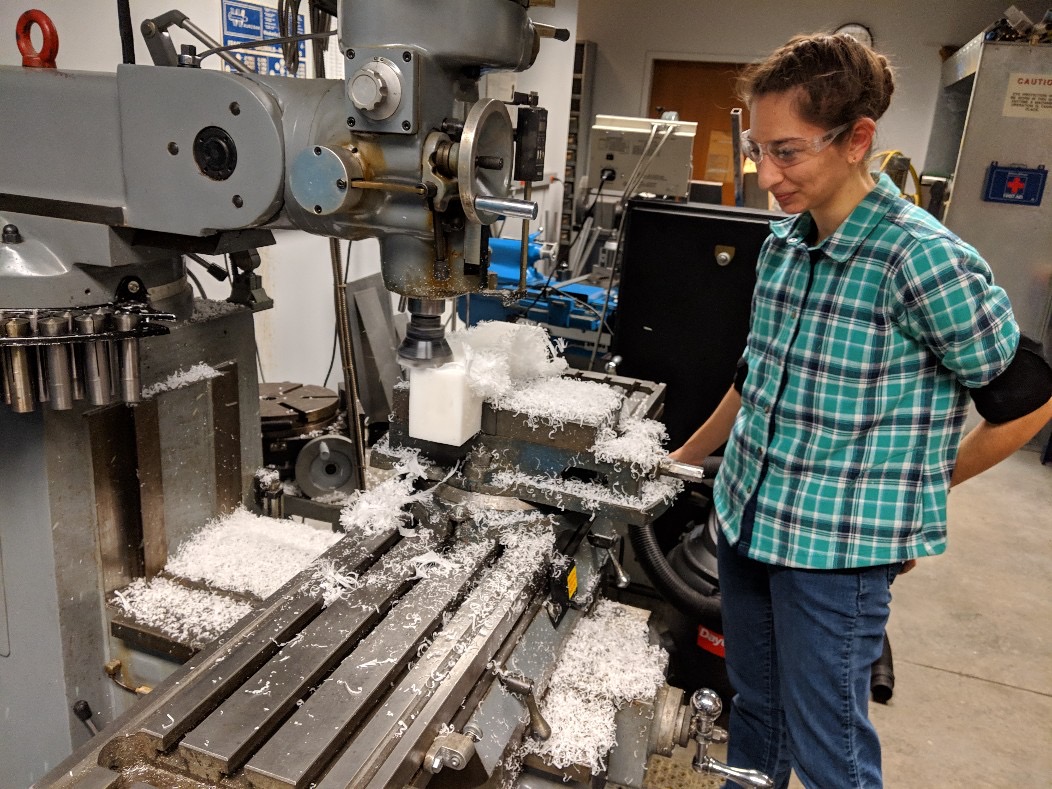
After the trough was fabricated, I had to reverse engineer some control software since the original drivers were long gone. The basic control flow is shown below
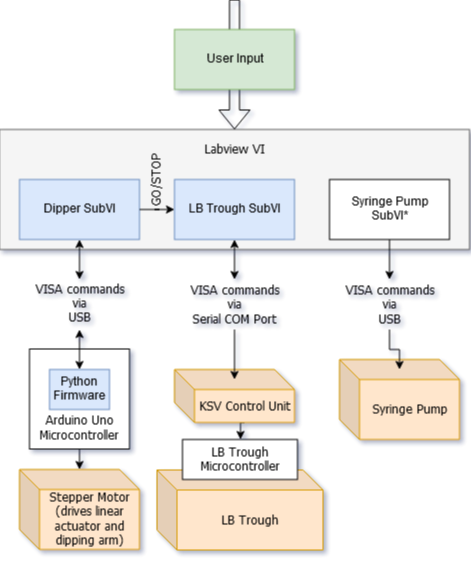
This included assembling and calibrating a desktop dipper from an arduino, stepper motor, and linear actuator. When finally assembled, the system looked like this.
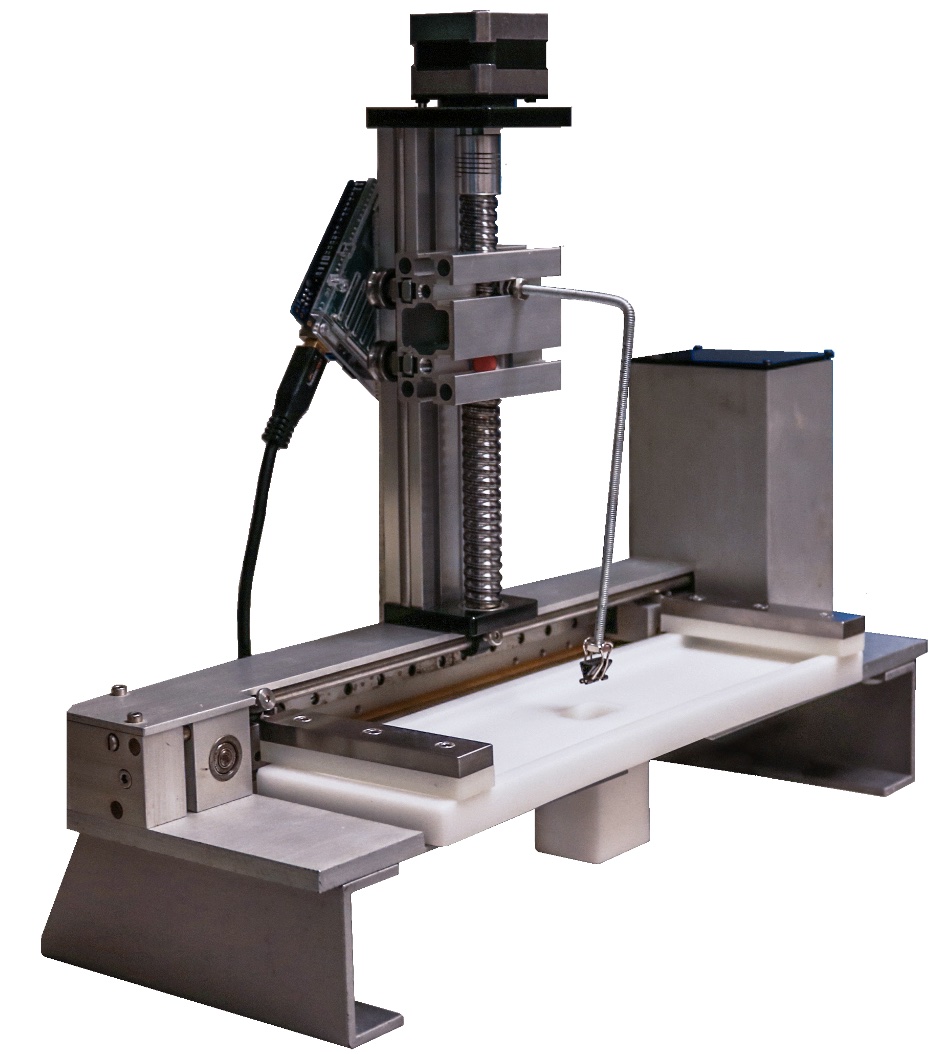
I then built a giant plastic box to keep debris from falling onto the trough surface, and jammed the whole thing inside a fume hood.

I eventually added a surface balance and put the trough chassis in a tray of sand to further damp vibrations which might disturb the thin film formation. The whole thing works pretty good. If you want the labview code, shoot me an email.
Thanks to A. Mosey for training me on the mill, and D. Emerson for his reverse engineering software expertise.